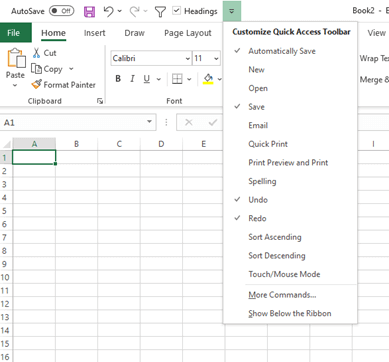How to Easily Find Z Stat in Excel: Quick Guide

Excel remains one of the most powerful tools for data analysis, offering a plethora of statistical functions to make your work easier. One of these functions involves finding the Z-statistic, which is crucial for various statistical tests like hypothesis testing or calculating confidence intervals. Here's a step-by-step guide to quickly find the Z Stat in Excel.
Understanding the Z-Statistic
Before diving into Excel, it’s beneficial to understand what the Z-statistic is:
- Z-statistic or Z-score measures how many standard deviations a data point is from the mean. It’s often used to normalize data or standardize scores.
- The formula for calculating the Z-statistic is:
- X is the individual data point.
- μ is the mean of the dataset.
- σ is the standard deviation of the dataset.
Z = (X - μ) / σ
where:
Step-by-Step Guide to Find Z Stat in Excel
Here is how you can easily calculate the Z-statistic in Excel:
1. Input Your Data
Start by entering your dataset into Excel. Assume your data is in column A:
A
1 Data
2 60
3 65
4 70
5 68
6 72
2. Calculate the Mean
In an empty cell, use the AVERAGE function to calculate the mean:
- Enter:
=AVERAGE(A2:A6)
3. Calculate the Standard Deviation
Use the STDEV.S function in an empty cell to calculate the standard deviation:
- Enter:
=STDEV.S(A2:A6)
4. Find Your Data Point (X)
Select the cell with the data point you want to find the Z-score for, let’s say it’s A4:
5. Calculate the Z-Statistic
In a new cell, use the Z-score formula:
- Enter:
=(A4 - [Mean Cell]) / [Standard Deviation Cell], replacing [Mean Cell] and [Standard Deviation Cell] with the actual cells where you calculated these values.
If the mean was in cell D1 and the standard deviation in E1, your formula would look like this:
= (A4-D1)/E1📝 Note: Ensure your formula references the correct cells where you calculated the mean and standard deviation.
6. Using Excel Functions Directly
Alternatively, you can use Excel’s built-in function STANDARDIZE which directly calculates the Z-score:
- Enter:
=STANDARDIZE(A4, AVERAGE(A2:A6), STDEV.S(A2:A6))
📝 Note: The STANDARDIZE function takes three arguments: the value to standardize, the mean, and the standard deviation.
Interpreting the Z-Statistic
The Z-statistic you calculate will help you understand:
- How many standard deviations your data point is from the mean.
- Whether your data point is on the left (negative) or right (positive) side of the mean.
- Its relative position in comparison to the entire dataset.
Conclusion
Finding the Z-statistic in Excel can be done with straightforward formulas or using Excel’s built-in functions. By understanding how to calculate this statistic, you can perform further analysis like hypothesis testing or construct confidence intervals with ease. This guide provides a practical approach to enhance your statistical analysis capabilities in Excel, making your data more insightful and actionable.
What is the Z-statistic used for in statistical analysis?
+The Z-statistic, or Z-score, is widely used in statistical analysis to:
- Standardize data, making it easier to compare across different datasets.
- Perform hypothesis tests, such as testing the significance of the difference between two means.
- Determine the probability of a sample statistic being a result of chance.
- Construct confidence intervals for a population mean.
Can Excel directly calculate a Z-statistic without individual steps?
+Yes, Excel has the STANDARDIZE function which allows you to directly calculate the Z-score:
=STANDARDIZE(x,mean,standard_dev)
How do I know if my Z-statistic is significant?
+Significance can be assessed by comparing the calculated Z-statistic against critical values from a standard normal distribution (Z-table) for your chosen significance level, typically:
- At a 0.05 significance level (95% confidence), Z values > 1.96 or < -1.96 are often considered significant.
- The absolute value of the Z-statistic and p-value can provide further insight.
Related Terms:
- z score with sample size
- calculate a-z score
- calculate z statistic
- z score chart pdf
- z symbol in statistics
- z score vs test statistic



